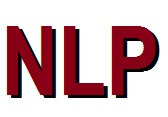Yesterday was a great day. I came up with some fascinating ideas that I can’t wait to roll out in the future.
One of the main topics we covered in detail was time lines, that is how you represent time cognitively (usually both visually and kinesthetically).
 I’m going to give you a simple but powerful drill you can use. In order to do this you need to know a desired goal (in NLP terms, a well-formed outcome) and have an idea of how you currently represent time.
I’m going to give you a simple but powerful drill you can use. In order to do this you need to know a desired goal (in NLP terms, a well-formed outcome) and have an idea of how you currently represent time.
If your “in time” you’re good to go. If you’re “through time” you’ll need to step onto your time line and face the future so that you become “in time”.
From here you look into the future and notice the place where you’ll achieve your goal. Step into the future.
Now notice what it is like to have achieved your goal. What do you see? What do you hear? What do you feel?
From this position take a step back. What is something you need to do right before you achieve your goal?
Take another step back. What came before that? And you can repeat this process as many times as you need, until you can fill in the gap from the present to the future.
Once you get back to the present moment notice how much more clear the future path may look.
Now step off your timeline to a meta position and look at the time. Is there anything you need to add that you can clearly see from this position to overcome any obstacles or just make faster progress?
There can be a lot more to it then this, but this simple drill is a form of backwards planning, made even more effective by using spatial anchors and properly using how you represent time.
The truth is, you probably already know enough to accomplish your goals. This drill can help you form the plan you need, then all you have to take is action.
